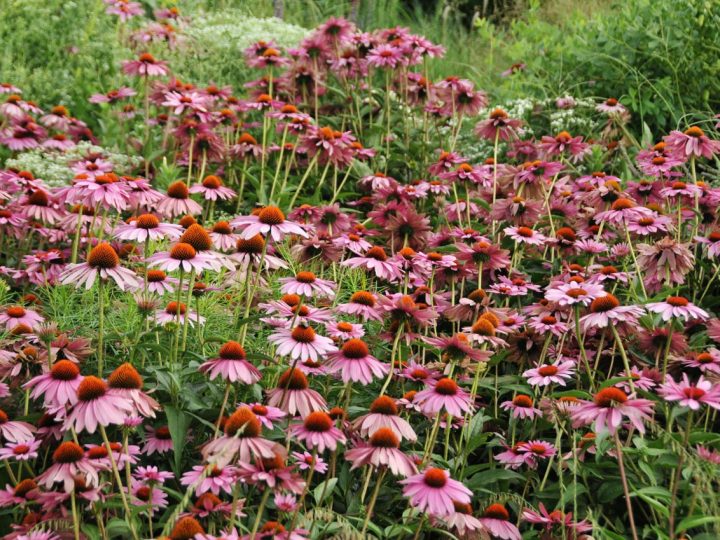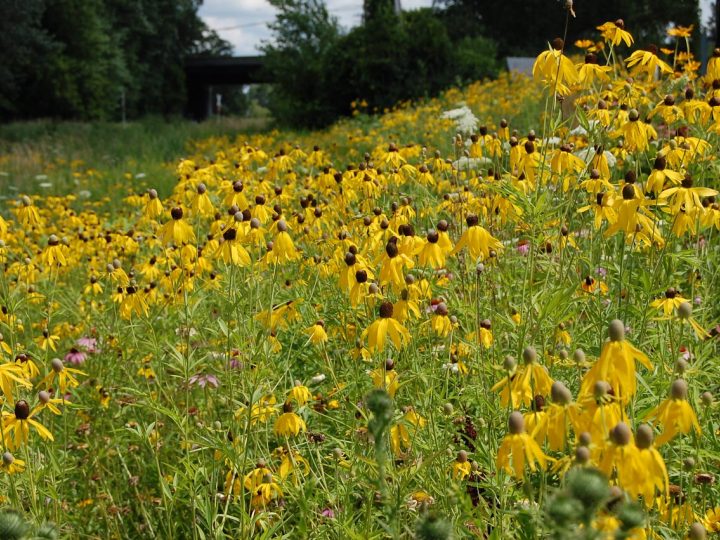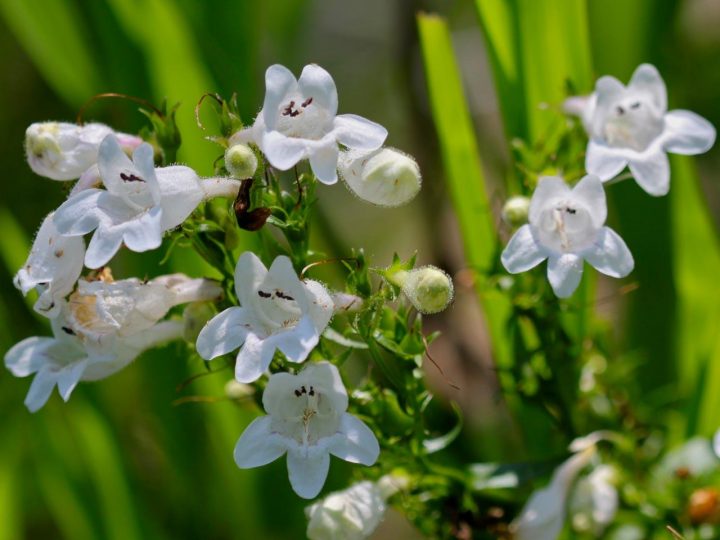
Clay Soil Meadow
Native meadow design for lots with clay soils.
Photo CC BY-NC-SA 2.0 Pat Dumas
Cost
People
Upkeep
Experience
Stormwater
Sun/Shade
The Clay Soil Meadow is a native meadow selected for heavy clay and other poor draining soils. Due to a mix of our existing geology and previous building removal practices, clay soils are quite common throughout Detroit. If you have tried planting gardens before but with little luck, this design may be perfect for your lot. The plant mix for this meadow is selected for its ability to grow in clay soil and for the colors it will provide to your lot. This plant mix can also be used as a substitute for meadow plantings in other lot designs.
Ideal Location: Residential lot in full sun or part sun.
Lot Type
Special Lot Condition
DFC 20 Year Land Use Area
Cost
The Clay Soil Meadow is a very low cost lot design. The majority of the cost of installing this design is from the plant seeds, and from possibly renting or purchasing equipment to prepare your lot. It is possible to install the lot design through the use of volunteer labor and without access to a car. The cost assumes that residents or volunteers have access to basic safety gear and garden tools.
Habitat Benefits
Other Benefits
Green Infrastructure
The native perennials in this lot design have deep roots that help capture, hold and absorb stormwater, while providing habitat and seasonal color. This lot design will improve the infiltrating abilities of your clay soils.
Vegetation and Visibility
The clean, mowed border of this meadow is set back ten feet from the sidewalk, or as far as the front porch of a house is from the sidewalk. The plant mix grows to a maximum height of three feet. This partially limits views from the street through to the alley, however, you will be able to mostly see through the plants.
Lifespan
Planting Type
Most Interesting Season
Other Consideration

Photo © Lambert, Rotherstien & Associates
Build
Installing the Clay Soil Meadow will make for a fun and rewarding weekend with your friends, family or neighbors. The installation of this lot design should not require professional assistance if you, with the help and support of others, would like to build this design. Please refer to the Step-By-Step section for guidance. The installation process does not require any special, mechanized equipment. The most strenuous physical tasks are potentially removing any existing vegetation from your lot, and scarifying, or raking the surface of the meadow planting area. Machines like a power rake might help, but for a single lot, you should be okay with rakes, some good music and maybe also some refreshments. The most strenuous part of the installation process is turning the soil on your clay lot. If you select to use a power rake, we recommend borrowing or renting multiple rakes, as this will ease and accelerate your installation process. There are many surprises just beneath the surface of structure-free land in Detroit, including extremely clay soils, and often rubble and other debris. Always hire a professional (or barter with one of your more energetic neighbors) if you are not up for the challenge, but remember, this will increase your costs. The Clay Soil Meadow is at its best on multiple lots—all the more reason to include your friends and neighbors in this project. Your group may also decide to build the Clay Soil Meadow over a series of weekends, completing one lot at a time through a phased or incremental approach.
Build Time Estimate
Ten hands or less! With the help of friends, family or neighbors, this project could be completed in a weekend. The Field Guide assumes the lot is ‘construction ready,’ and all equipment and materials required for the lot design have been acquired and are ready to use.
Build Difficulty
Number of People Needed
Neighbor Labor
Time Taken to Build
Build Season
Transportation Intensity
Permit Requirements
Other Build Considerations
Upkeep
The Clay Soil Meadow requires a medium level of maintenance to thrive. Maintenance requirements include weeding and watering the meadow, particularly during the first two growing seasons while the meadow establishes itself. In the first year, cut your meadow back to four to six inches whenever it reaches above 10 inches in height.
After the first year, continue weeding and mowing your meadow in late fall or early spring to keep it at its best. It will take about three years for the meadow to establish. After three years, though, your meadow will require less maintenance overall than a traditional lawn!
Meadows are a work in progress. If you feel your meadow needs more color, it is okay to add additional native seed mixes and plants. Be creative and make it your own!
Seasonal Upkeep Levels
- Spring: Low
- Summer: Low
- Fall: Low
- Winter: Low
















